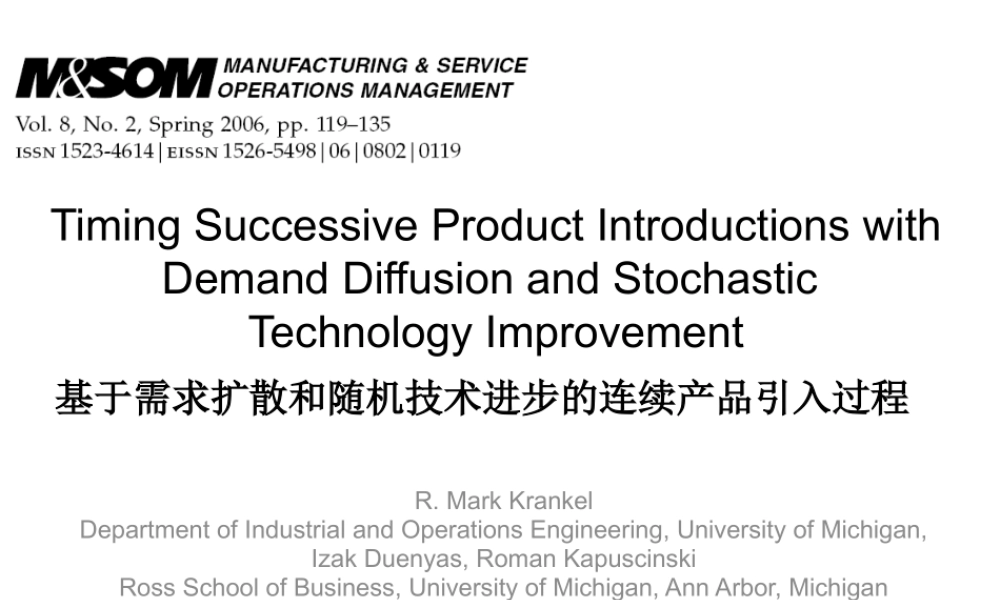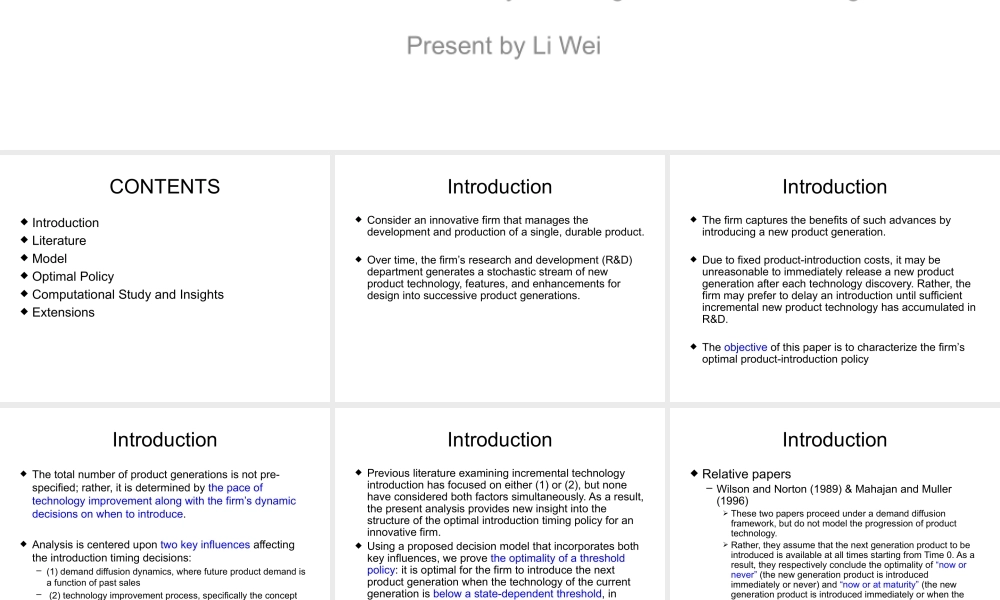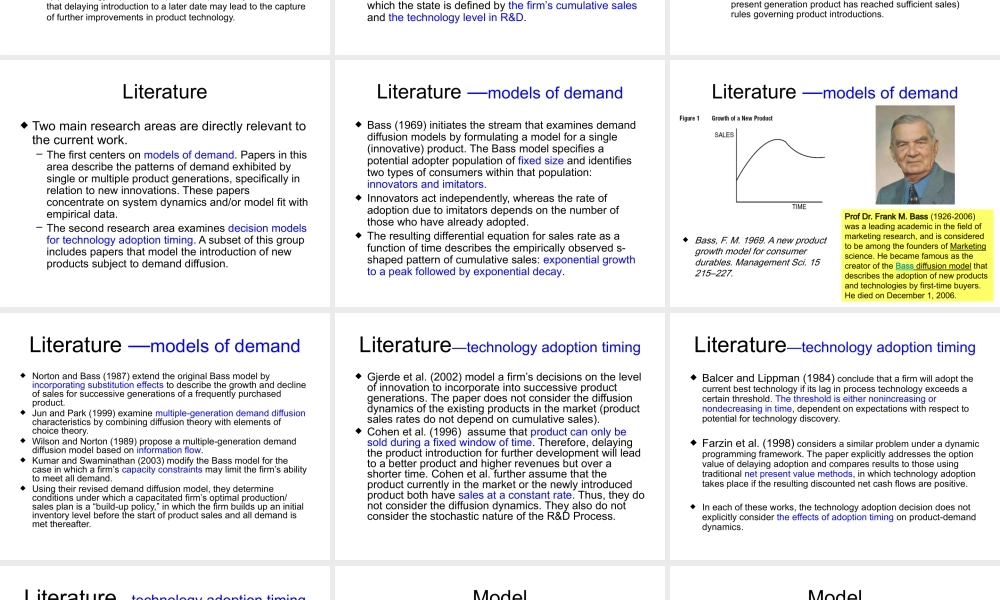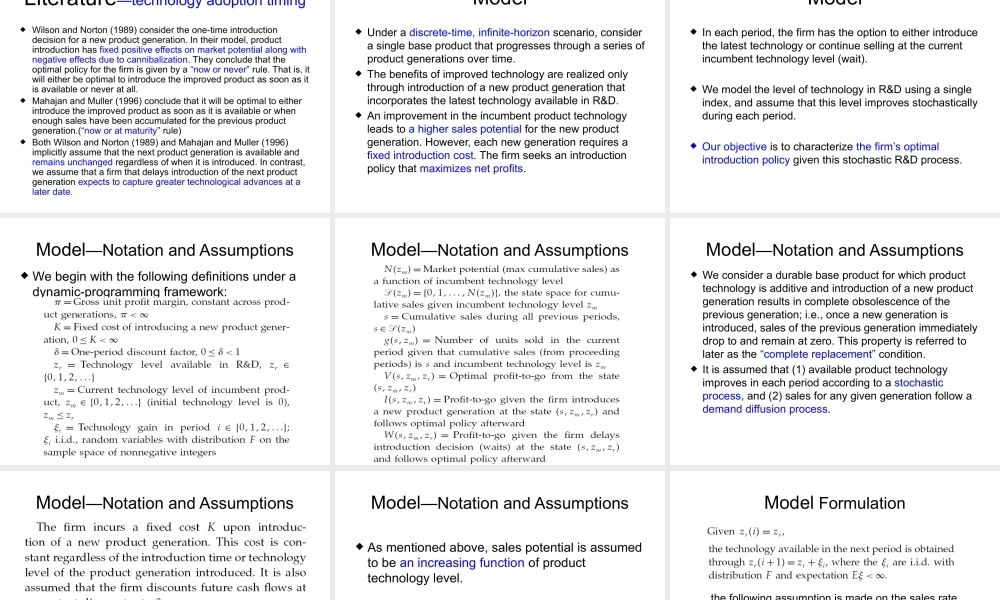Timing Successive Product Introductions with Demand Diffusion and Stochastic Technology Improvement基于需求扩散和随机技术进步的连续产品引入过程 R. Mark KrankelDepartment of Industrial and Operations Engineering, University of Michigan,Izak Duenyas, Roman KapuscinskiRoss School of Business, University of Michigan, Ann Arbor, MichiganPresent by Li WeiCONTENTS Introduction Literature Model Optimal Policy Computational Study and Insights ExtensionsIntroduction Consider an innovative firm that manages the development and production of a single, durable product. Over time, the firm’s research and development (R&D) department generates a stochastic stream of new product technology, features, and enhancements for design into successive product generations.Introduction The firm captures the benefits of such advances by introducing a new product generation. Due to fixed product-introduction costs, it may be unreasonable to immediately release a new product generation after each technology discovery. Rather, the firm may prefer to delay an introduction until sufficient incremental new product technology has accumulated in R&D. The objective of this paper is to characterize the firm’s optimal product-introduction policyIntroduction The total number of product generations is not pre-specified; rather, it is determined by the pace of technology improvement along with the firm’s dynamic decisions on when to introduce. Analysis is centered upon two key influences affecting the introduction timing decisions: – (1) demand diffusion dynamics, where future product demand is a function of past sales– (2) technology improvement process, specifically the concept that delaying introduction to a later date may lead to the capture of...




